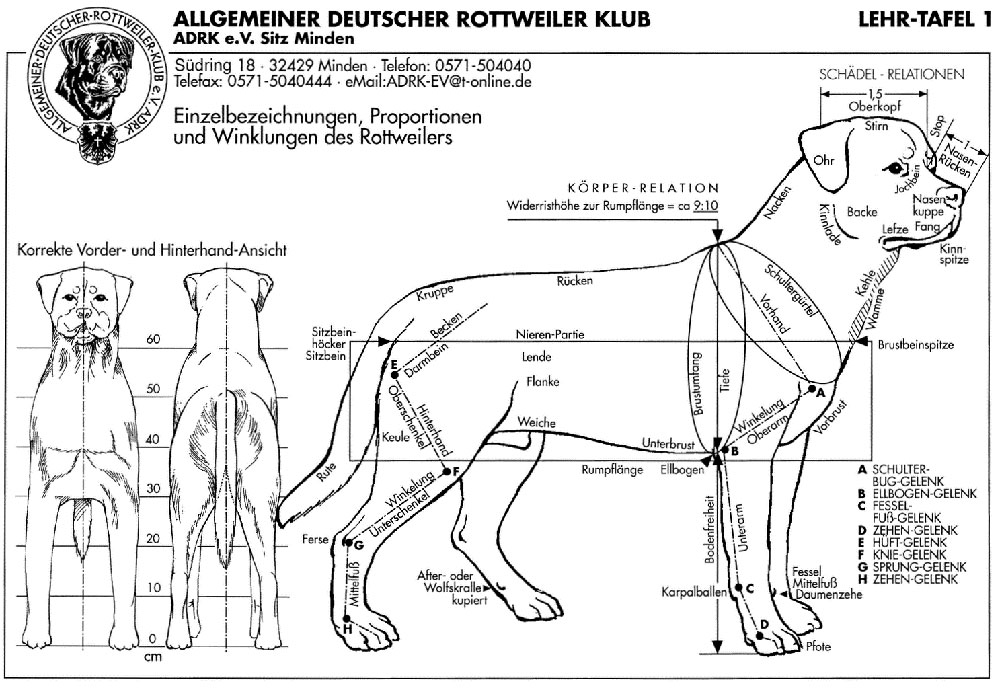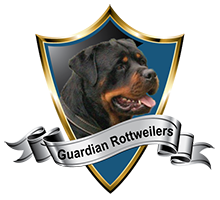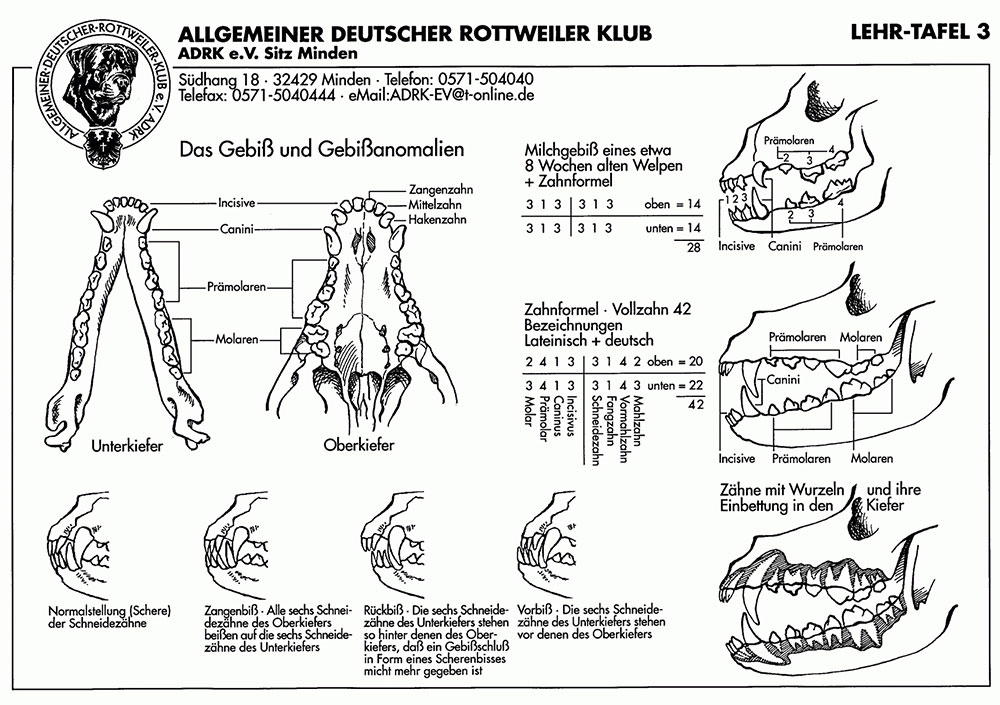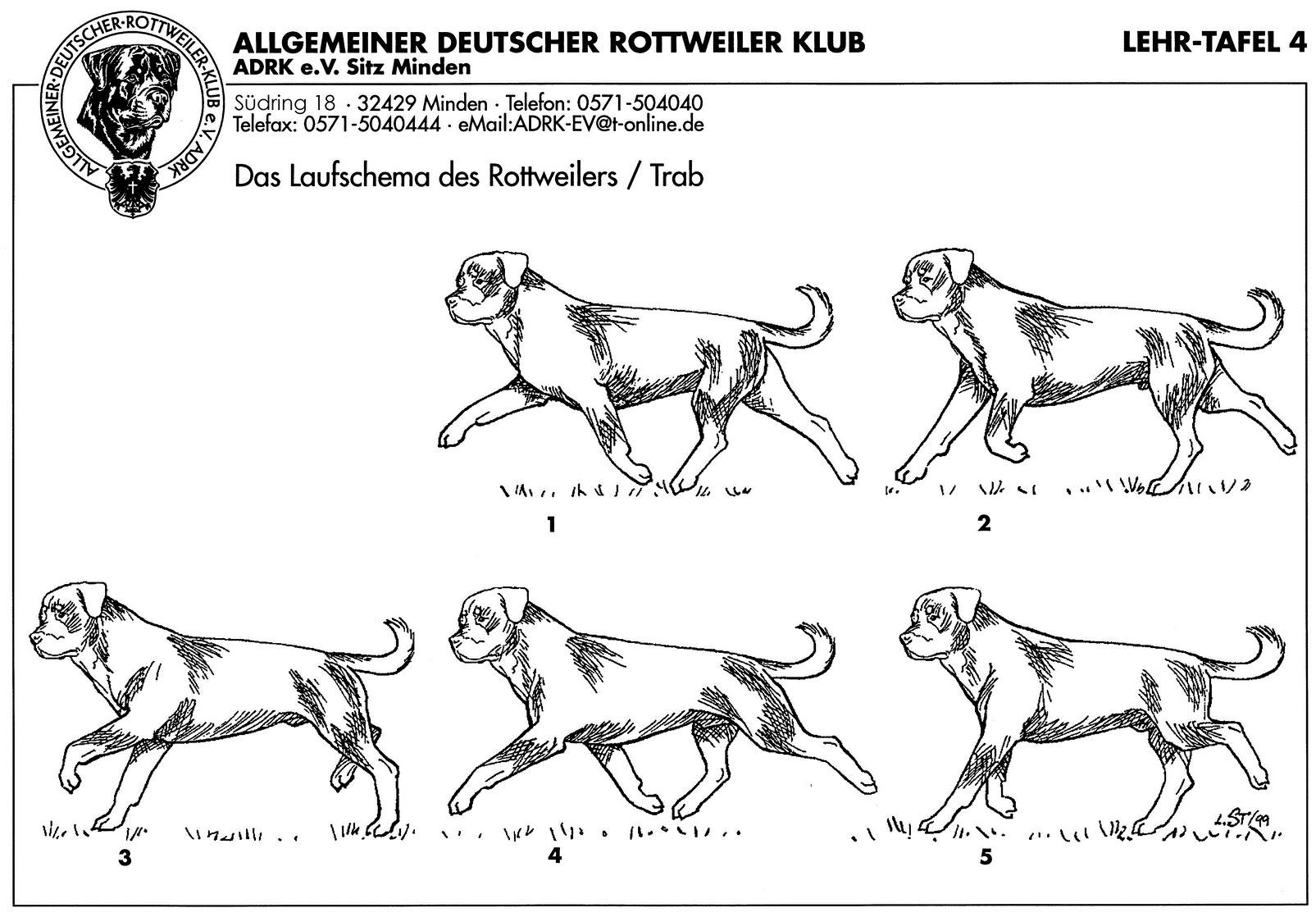Compare rottweilers from two reputable breeders, one in Rottweil Germany (the source 🙂 ) and another in Miami Florida, the dogs should look fairly similar. This kind of uniformity is achieved by breeding only males and females that conform to the Rottweiler Breed Standard. The standard is comprehensive covering many aspects of the Rottweiler’s appearance and character. But there’s a limit to how much fine detail the standard can encompass, resulting in room for interpretation by breeders, and some acceptable variation in different lines of dogs. When we hear “American” rottweiler, we get an image of a leggy dog with a snipey muzzle, and perhaps lighter tan markings. Such a dog is a significant and unacceptable departure from the breed standard. It should be clear at this point that there is no such thing as an “American” rottweiler, because there is only one breed standard for the rottweiler. A dog that doesn’t conform to the standard is not a different breed, it is simply a poorly bred dog. At Guardian Rottweilers we strictly adhere to the original German rottweiler standard as set forth by the A.D.R.K. and it shows in our dogs and puppies.
The Standard
(Rottweiler anatomical pictures used here with expressed permission of Dr. Manfred Herrmann of the A.D.R.K.)
Origin: Germany
Utilization: Companion, service and working dog
Classification FCI:
Group 2 (Pinscher and Schnauzer type, Molossian type and Swiss Mountain- and Cattle Dogs and other breeds)
Section 2.1 Molossian type, Mastiff type with working trial
Brief historical summary:
The Rottweiler is considered to be one of the oldest dog breeds. Its origin goes back to Roman times. These dogs were kept as herder or driving dogs. They marched over the Alps with the Roman legions, protecting the humans and driving their cattle. In the region of Rottweil, these dogs met and mixed with the native dogs in a natural crossing. The main task of the Rottweiler now became the driving and guarding of the herds of cattle and the defense of their masters and their property. This breed acquired its name from the old free city of Rottweil and was known as the “Rottweil butcher’s dog”.
The butchers bred this type of dog purely for performance and usefulness. In due course, a first rate watch and driving dog evolved which could also be used as a draught dog. When, at the beginning of the twentieth century, various breeds were needed for police service, the Rottweiler was amongst those tested. It soon became evident that the breed was highly suitable for the tasks set by police service and therefore they were officially recognized as police dogs in 1910.
Rottweiler breeders aim at a dog of abundant strength, black coated with clearly defined rich tan markings, whose powerful appearance does not lack nobility and which is exceptionally well suited to being a companion, service and working dog.
Behavior / Temperament:
Good natured, placid in basic disposition and fond of children, very devoted, obedient, biddable and eager to work. His appearance is natural and rustic, his behavior self assured, steady and fearless. He reacts to his surroundings with great alertness.
General Appearance:
The Rottweiler is a medium to large size, stalwart dog, neither heavy nor light and neither leggy nor weedy. His correctly proportioned, compact and powerful build leads to the conclusion of great strength, agility and endurance.
Important Proportions:
The length of the body, measured from the sternum (breast-bone) to the ischiatic tuberosity, should not exceed the height at the withers by, at most, 15 %.



